Japan
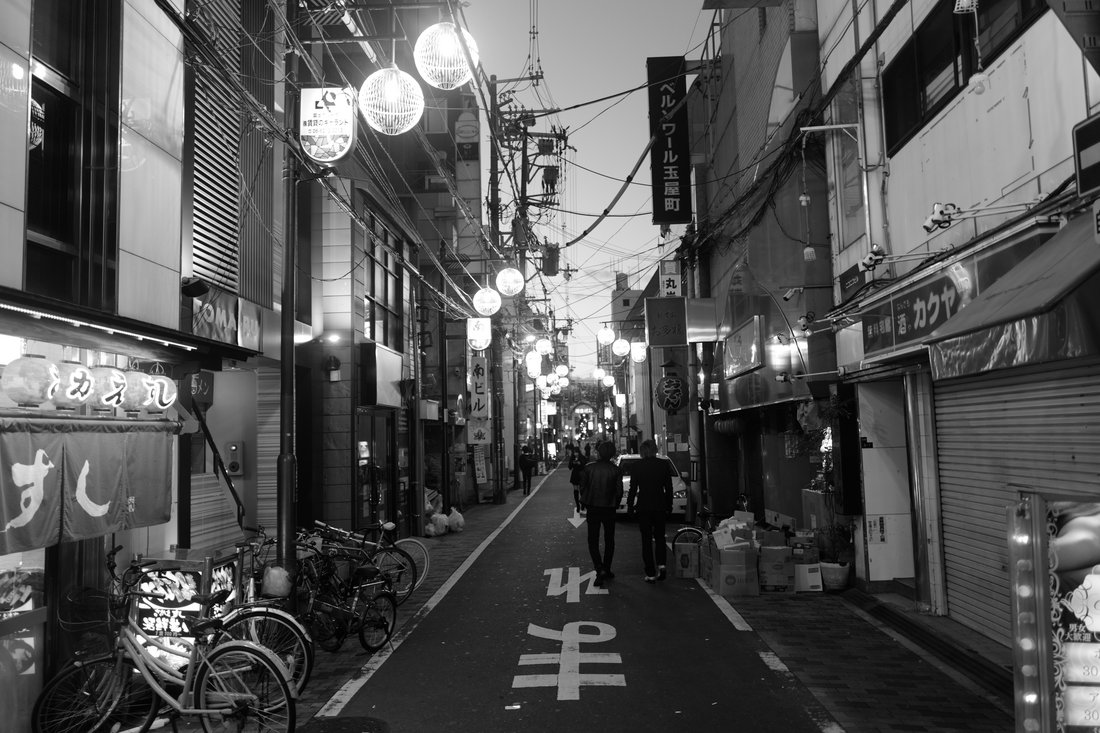
In 1992 Michael Crichton wrote Rising Sun. At the time Japan was seeing a meteoric rise, moving from a post-war reconstruction project towards becoming the most powerful economic engine in the world. America invented TV, cars, film, printers, and denim, but was seeing its domestic market flooded with Japanese versions that weren’t just cheaper, but better in every way that mattered. At the time, the US was feeling an existential insecurity similar to the one China elicits in it today.
Here’s an excerpt from the book that’s always stuck with me:
“If we knew what made Ishiguro behave as he did, we’d understand this case.”
“I don’t understand.”
“It’s hard for an American to see him clearly,” Connor said. “Because in America, you think a certain amount of error is normal. You expect the plane to be late. You expect the mail to be undelivered. You expect the washing machine to break down. You expect things to go wrong all the time.
“But Japan is different. Everything works in Japan. In a Tokyo train station, you can stand at a marked spot on the platform and when the train stops, the doors open right in front of you. Trains are on time. Bags are not lost. Connections are not missed. Deadlines are met. Things happen as planned. The Japanese are educated, prepared, and motivated. They get things done. There’s no screwing around.”
At the peak of Japan’s dominance it was said that the property under the Imperial Palace in Tokyo was worth more than the entire state of California. But instead of the country’s economy shooting to the moon, a collapsing asset bubble in the early 90s left it stagnating for twenty years (the so-called “Lost Decades”). With the 20-20 insight into the past that we have today, Rising Sun’s cautionary theme feels dated.
Even so, the passage is still more accurate than not. Everyone’s heard that trains in Japan are on time, but you don’t see until you visit that it’s literally true. Not only that most trains are on time, but that right up to a miniscule margin of error, all trains are on time, all the time. Rail infrastructure and technology isn’t a little better than what you find the states, it’s three orders of magnitude better.
Everyone in Japan from Shinkansen conductors to sushi chefs and store clerks to CEOs practice their professions with disciplined seriousness. A subway kiosk goes out of service and an attendant is flagged over and has it fixed in minutes. You walk out of a bar and the owner follows you into the hallway, and bows deeply until the elevator’s doors hide her from sight. A train leaves the station 20 seconds early and its operator issues a formal apology.
Hello, again
Oh yeah, I went to Japan, and for my money, it’s the most interesting country on Earth. Not because its trains are fast (although you do just have to love the train), but because of its amazing beauty, long history, unique culture and technology, and friendly people.
I had the privilege of visiting a variety of its sights – everything from dense urban jungles to beautiful wild areas. This letter turned out to be a little long, so it’s coming out in two parts, with the next in early 2018.
As usual, you can unsubscribe instantly by clicking here, but I hope you don’t. Thanks for reading!
Stranger than fiction
Let’s start with a few facts about Japan that I think every westerner (who’s never visited) will find surprising:
Many have heard the urban legend that if you lose your wallet in Japan, it’ll be returned to you. It’s true. I first heard the story from a teacher in elementary school who’d left her purse on a park bench. She came back and retrieved it the next day.
In a bar in Osaka, I met a guy who’d forgotten his wallet on the train just the week before. He filed a report, JR found it, and mailed it to his hotel. They called beforehand to make sure it was okay to open it and remove a few hundred yen in bills to pay for postage.
Convenience stores (largely 7-11, Family Mart, and Lawson) are a cornerstone of society. Unlike almost anywhere else on Earth, they’re ubiquitous even in rural areas, and serve great food like onigiri and pork buns.
There are vending machines everywhere and they dispense everything from hot drinks to fried food. Prices are the same as local convenience stores so there’s no reason to avoid them. Tommy Lee Jones, a figurehead for Suntory’s Boss brand, stares back from many of them throughout the country.

- There are no public trash cans. If you have something to throw away, you pack it out until you get home or come across a convenience store. You’d think this would lead to runaway littering, but Japanese cities are the cleanest places you’ll ever find. Everyone follows the rules.
- Corndogs are called “American dogs” and sold at every convenience store along tiny condiment packets that dispense the perfect amount of ketchup and mustard. They’re delicious, and now rank amongst my favorite foods.
- Train conductors speak and motion with their hands as they’re driving (gesturing symbolically to the track ahead, lights they pass, their timetable, etc.). They do it even when they’re alone. The technique is called pointing and calling and has been shown to reduce mistakes by about 85%.
- Every taxi in the country has a robotic passenger door that can be opened at the push of a button (and it’s not a sliding door like a minivan, but one that swings outward like a normal car’s).
Kanazawa
Kanazawa’s a city of about half a million parked on the coast northwest of Tokyo along the Sea of Japan. After a brief layover at Narita to board a new plane, it was our first stop.
Kanazawa’s a great place to visit because it has the beauty and history of Japan without the density of its major metropolises (which can be a little overwhelming for visitors). Houses in the city were once taxed based on the width of their street frontage, which led to the development of picturesque streets packed with houses that are narrow in the front, but which stretch deeply into their block.
Every few minutes you stumble across a shrine as you’re exploring, and most of them are inconceivably beautiful (there’s one depicted below). They’re part of Japan’s Shinto religion, and it’s common for the otherwise secular locals to visit them for a quick few minutes of prayer.

It’s a wet region, and at night we’d often find ourselves laying back listening to thunderstorms raging outside. Like anyone who lives with regular rain, the locals hate it. To someone who lives in dry California, it’s fantastic.
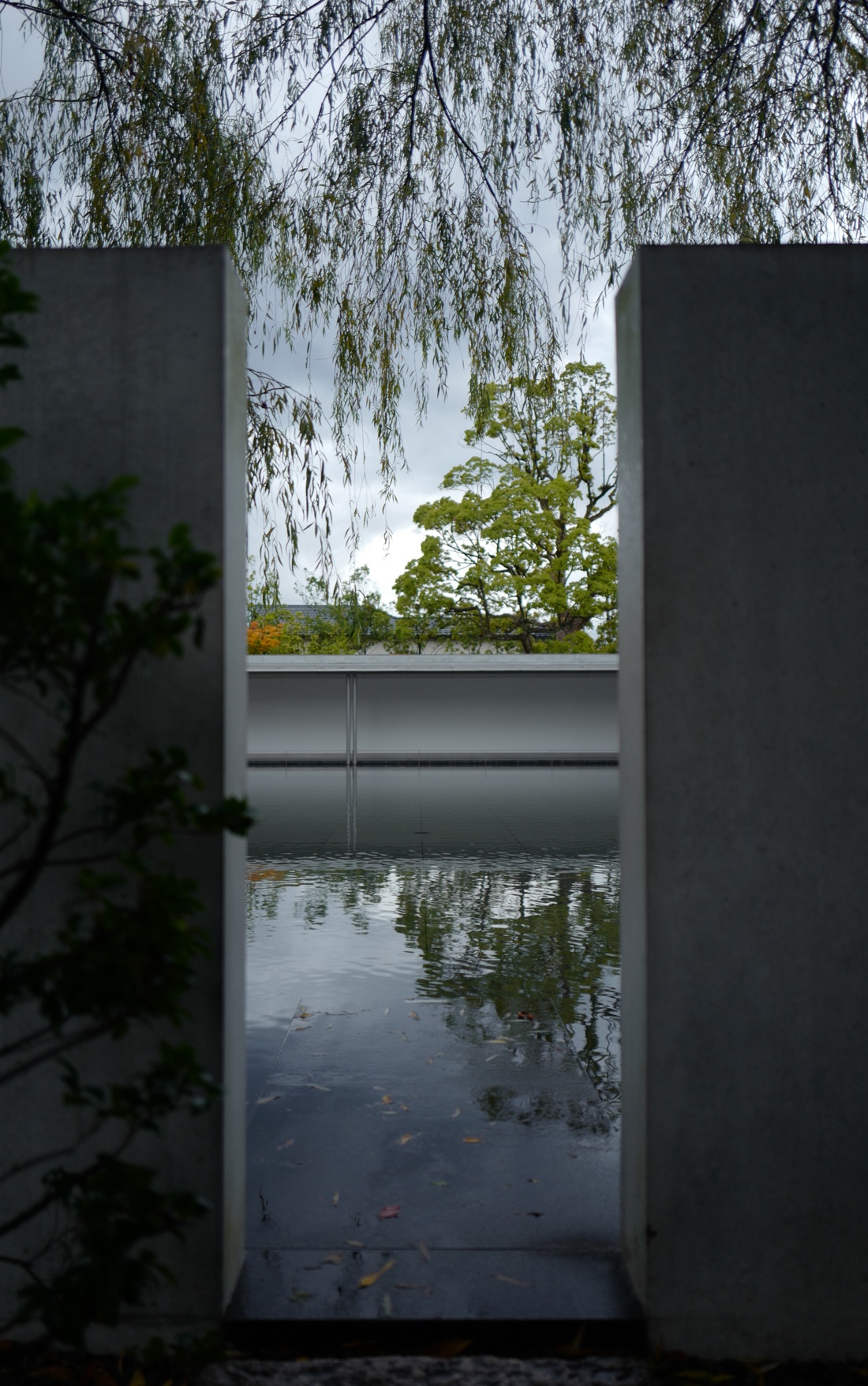
Yukitsuri
One of Kanazawa’s signature features is the Kenrokuen Garden, considered to be one of the “Three Great Gardens of Japan” along with its sisters in Okayama and Mito. It has all the hallmarks that you’d expect in a Japanese garden including sculpted trees, tranquil ponds, and moss-covered stone bridges and lanterns.

A common sight at Kenrokuen is “Yukitsuri”, a Japanese technique for protecting the growth of trees from heavy snowfall. Ropes are hung to lend extra support for branches and larger ones are propped up with bamboo columns. The scaffolding keeps parts of the tree upright and growing laterally that would otherwise bow under the weight of heavy, wet snow that comes every winter.
Yukitsuri fosters a form of sprawling growth that would be impossible in nature. It’s pretty neat to look at too.
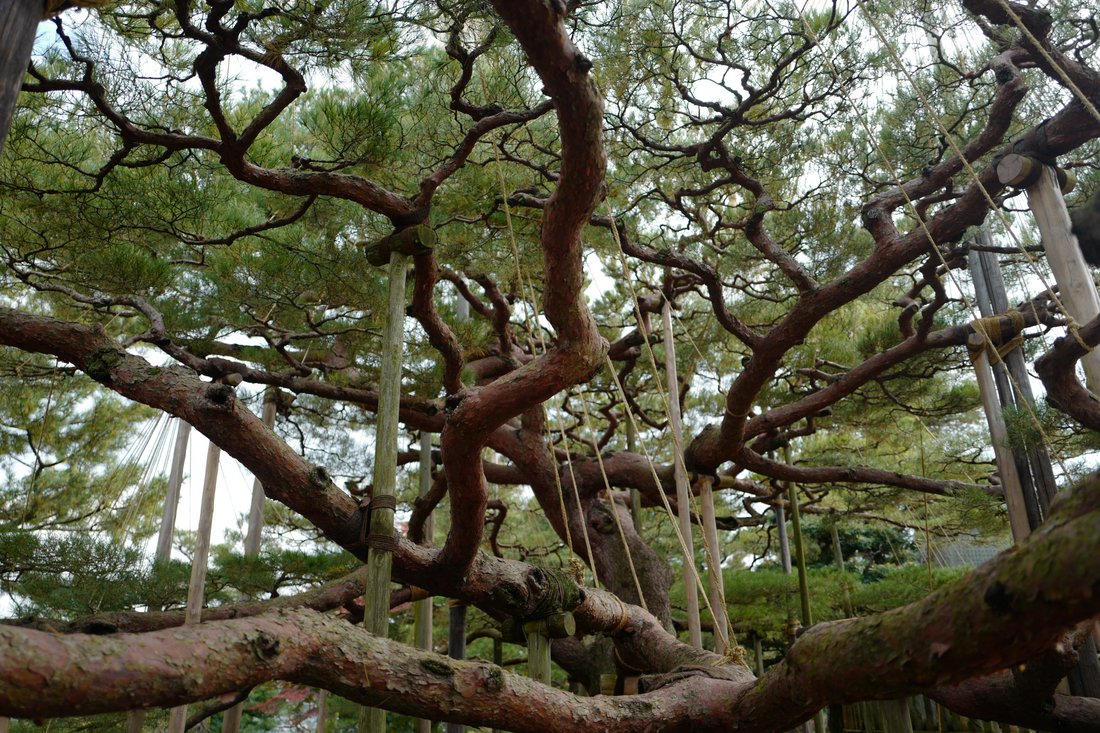
The macaques of Nagano
Japan has its own species of macaque, colloquially referred to as a “snow monkey”. With the exception of humans, no other primate lives further north, or in colder weather.
We visited Jigokudani Snow Monkey Park in Nagano, an area well known for its wild monkeys and its natural hot springs. During the cold winter the monkeys to flock to the hot springs, where they relax in the warm water. (And in my opinion, make some of the world’s greatest models. Google it.)

The macaques don’t make it to the human-accessible part of park every day, but its wardens helpfully post daily updates to Facebook that read “monkeys!!” or “no monkeys :(” so that you can get a feel for how often they visit (they usually do).
When they come, they come in droves. As I came up the trail and saw my first macaque, I crept around him carefully, afraid that I’d scare him off. A moment I realized later that I was missing the forest for the trees – a little further up the path were about two hundred others like him, screaming at each other and scrambling chaotically in every direction, often just inches from your feet. There are very few parks in the world where you’ll get such a wild experience this personal.
Shibu Onsen
A little down the road from Jigokudani is a village called Shibu Onsen that’s an excellent embodiment of rural Japan. Onsen (♨) is the Japanese word for a natural hot spring. Some places, like Shibu Onsen, are so intrinsically linked to their hot springs that they have “onsen” right in the name.
The village has a narrow main road with nine bath houses built along it. Most of them don’t have reception areas; instead there are two doors leading to the men’s and women’s baths that lead right off the street. Visitors are given a master key by the ryokan (a traditional Japanese inn) where they’re staying and travel up and down the street visiting each one. Most are clothed only in yukata robes; geta sandals clacking loudly against the stone as they make their unhurried journeys. It’s said to be good fortune to make it to all nine of the baths in one day.

We couldn’t do the normal tour because we didn’t have a place to stay overnight, but we found a small ryokan that let us in to use their onsens (plural, there were about five in the building) for a few hours. The place looked to be about two hundred years old, but with age comes character, and the history was palpable in every ancient tile and softened plank of wood. The mineral formations on some pipes were two inches high – salty buildup caused by decades of carrying the raw yield of the Earth.
♨ Onsens & the art of bathing
The Japanese have taken advantage of their island’s volcanic nature to produce thousands of onsens around around the country, and amazingly, they’re just one of the types of public bath in Japan. The other is the sentō, identical to their naturally occurring cousins, but not restricted by geography – they’re filled with simple heated tap water instead of from a natural well.
Public bathing is engrained in the cultural landscape of Japan. Beyond just a way of getting clean, it’s also a way to go relax, socialize, and if you’re willing to buy into a little bit of folklore – heal. Onsens are often attributed with certain healing powers based on their location and unique mix of naturally occurring minerals.
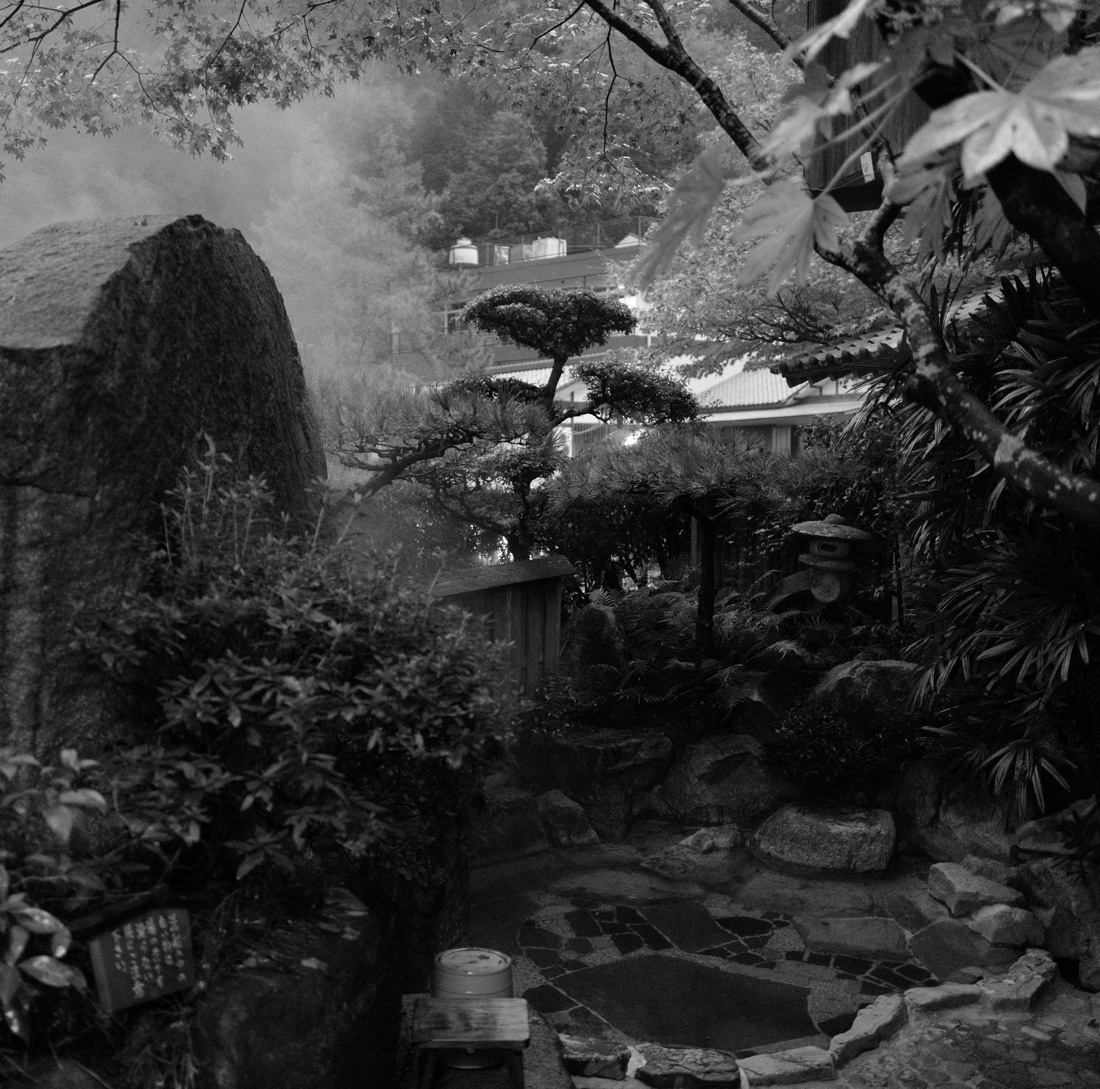
A common way for locals to escape the bustle of Tokyo is to make the short trip up to Hakone, known particularly for its traditional ryokans, colorful hues in the autumn, and of course – onsens. Japanese TV even carries a series about a salaryman who hates his job and skips work to visit local sentōs (Sunshine Sento-Sake).
Lucky Yebisu
During one of our last days in Japan we stumbled across the Yebisu beer museum in Tokyo’s vibrant Ebisu district (itself named for the beer company). “Yebisu” is derived from “Ebisu”, the Japanese god of fishermen and luck. He’s one of the Seven Gods of Fortune that you’ll find portrayed in every corner of Japan, and is shown on bottles of Yebisu with his fishing rod and baskets of fish.
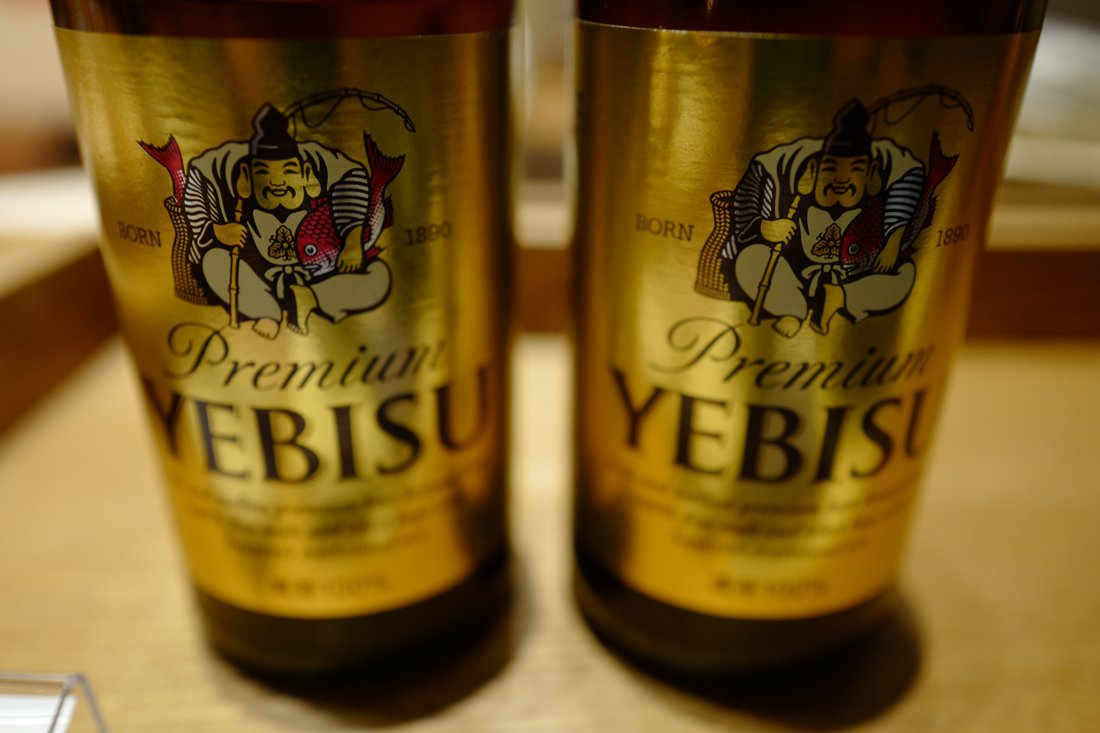
Here’s one of the most minute Easter eggs you’ll ever come across: 99%+ of Yebisu bottles look like the one on the right. A rare one in every few hundred looks like the bottle on the left. Notice the difference?
If not, you’re not the only one – you practically need a microscope to see it.
Look all the way over to the very left-hand side of the photo and you’ll see that Yebisu on the left has an extra fish. Both of his baskets are full while the Yebisu on the right has a fish in only one. These special bottles are called “Lucky Yebisus” and their extra detail is totally insignificant, and yet spread across the world. It serves no useful purpose other than to bring a little bit of delight into the day of one of the handful of people who come across a Lucky Yebisu and know its secret (and now, you might be one of them).
The iPhone X
I had my doubts about the iPhone X. Anyone paying attention knows that Jony Ives has wanted an end-to-end display on iPhones for years, and especially given the “form over function” maxim that Apple’s adopted since Steve’s death, he’d do whatever it takes to get one. Jettisoning a good and reliable technology (TouchID) for a new one with some novelty factor (FaceID) and a prettier screen? No problem.

But I was wrong to doubt it. iOS 11 rendered my trusty iPhone 6 a lame brick operating at glacial speeds, so I upgraded to the X. FaceID works great – it’s not perfect, but it has no more problems than TouchID did (which performed very poorly if your hands were wet or cold and didn’t work at all through gloves), and the OLED screen really is pretty. Its camera takes some amazing shots. The new A11 chip is fast.
Best of all, the removal of the home button isn’t just an aesthetic win (it removed the iPhone’s “chin”), but one for usability as well. Swiping up to go home is as fast and reliable as the home button was, but better yet, swiping up and to the left to multi-task is faster than the old double-click. The home button was overloaded, and the new swipe gestures are a big improvement.
The Hauser
I can’t stay away from cool bags. I picked up Mission Workshop’s new Hauser, a weatherproof pack with a striking design.

Technically it’s a hydration pack, but if you travel light, it’ll hold everything you need. The main compartment is narrow, but it’ll fit a stuffable jacket, change of clothes, and water bottle. The back compartment is just big enough to fit the 13” version of the latest generation MacBook Pro. There’s enough side compartments for all the cards, small tools, and Apple dongles that you need to have on you.
It’s the only bag that I took with me for a multi-day hike (albeit with nightly stops that were sheltered) along the Kumano Kodo in Japan (more on this to come in issue 003). At 14L it was a bit of a stretch space-wise, but it worked.
The perfect cup
I’ve owned a Chemex for years, but have always opted to eyeball my quantities – putting roughly the right amount of beans through the grinder, and filling the water to where I think is right.
I recently invested in a couple new tools. The first is a kitchen scale that I can use to get all quantities exactly right. The second is a long-stemmed coffee kettle with a twist: it has a small thermometer on the top that I can use to hit the ideal 96° C.

They helped me to a few realizations fast. I hadn’t been using enough beans, I’d been adding too much water, and I’d been letting the water cool for way too long (it turns out that boiling water left to cool on the counter really only takes a few seconds to fall to 96).
The usability features built into a $15 kitchen scale these days are impressive. Mine will “tare” (that’s when its weight reading is zeroed to account for the weight of an empty container) automatically when it’s turned on. As long as there’s a container on it first, it’s fully operable by pressing only one button one time – a tiny bit of ingenuity in gastronomic technology.
Here’s my Chemex recipe:
- 42g coffee ground to the consistency of Kosher salt.
- Bloom by pouring 150g of water over ~45s (water at 96° C).
- Finish by pouring on another 450g water for a total of 600g.
A few other publications
If you’re interested in reading a little more in-depth on
technical subjects, since the last edition of Passages I
published two more articles on idempotency. The article
published earlier this year on Stripe’s
blog is a decent primer. Using atomic
transactions to power an idempotent API
goes a little further to talk about how to implement an
idempotent API whose correctness is guaranteed through the
SERIALIZABLE isolation level in Postgres. Implementing
Stripe-like idempotency keys in Postgres
covers the more difficult case where the API has to make
its own mutation by calling out across a network to foreign
services.
Redis streams and the unified log introduces the new streams data structure in Redis, and how it can be used to build log-based architecture in software. In many stacks streams will make a good Kafka alternative that’s easier to install and cheaper to run.
Thanks for making it this far! I hope this newsletter will serve as your periodic reminder to get in touch. Just hit “reply”.
– Brandur